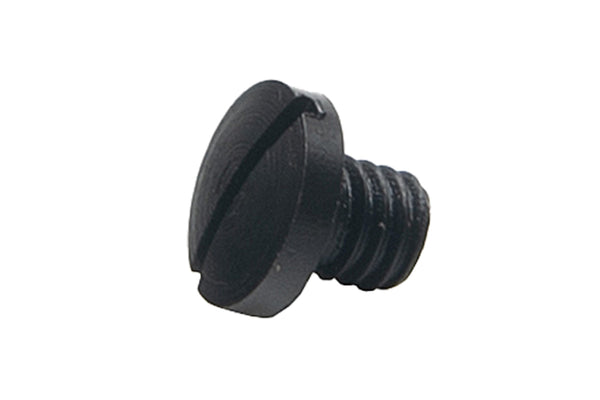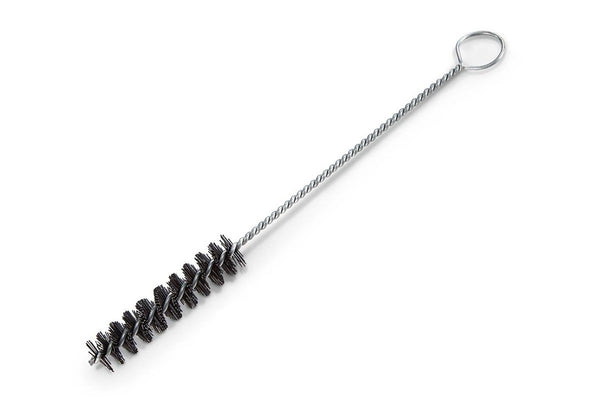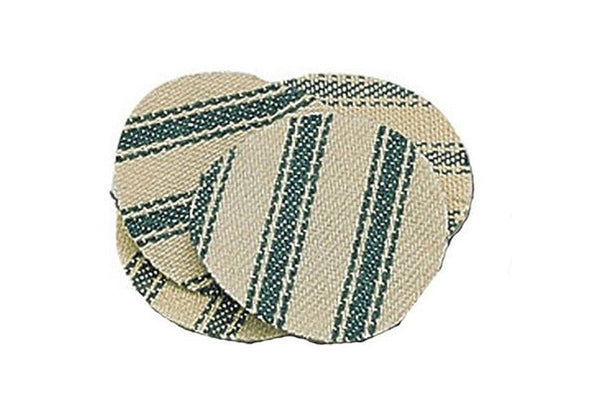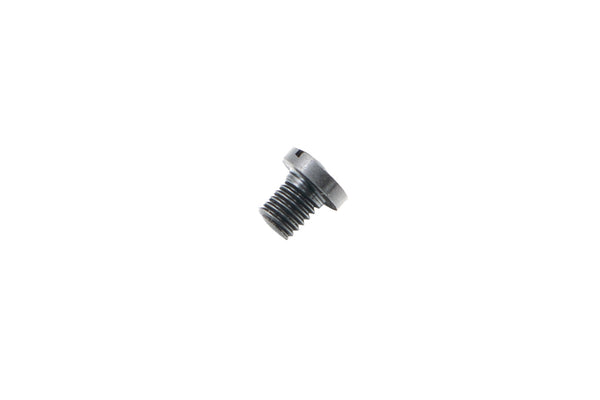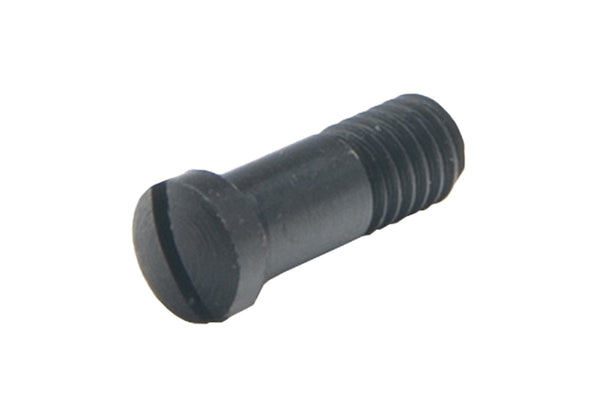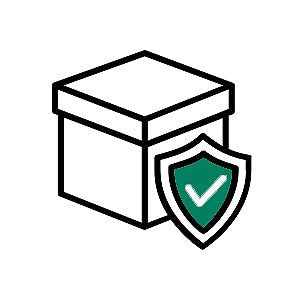Call 1(855) 236-5000

 >
>

All About Bullets - The Beginners Guide To Muzzleloading - Part 5
This installment is all about bullets. There are more muzzleloader bullets on the market today than ever before. All of the options can be difficult to sort through and make sense of. We are going to provide you with some information to help you in your bullet selection process.
You can break muzzleloader bullets up into roughly 5 groups or styles of projectile. Round Ball, Traditional Conical, Saboted Bullet, Belted Bullets and Full Bore Bullets. Below you can see side by side comparisons of the different styles of projectiles.

From left to right: lead round balls, traditional conical projectile, saboted projectile, belted projectile, full bore projectile.
As you can see in the photo above there are similarities and of course notable differences between the different styles of bullets. Each one has its own unique strengths and weaknesses so we will want to carefully consider both when deciding on the right bullet for any given application.
Round Ball

To start with we will address the round ball. These are a simple projectile design that have been around as long as guns have been around. They are simply a solid ball of lead and are designed to be fired out of muzzleloaders that have a slower twist rate such as 1:60 or slower. These projectiles are not very stable and will typically only be accurate around 100 yards are closer. There are some specialty guns that can help a round ball shoot further, however, the majority of factory made muzzleloaders you will come across will perform well between 80 and 100 yards or closer when shooting a round ball.
When it comes to shooting a round ball, they typically need to be used in conjunction with a shooting patch. The shooting patch provides a seal around the ball to allow for proper acceleration. The primary exception to this would be cap and ball revolvers. For revolvers an oversized round ball is used in the smooth cylinder chambers and a patch is not needed in that instance.
Round balls have been used for hundreds of years for hunting and can deliver devastating damage to a soft target. Many new muzzleloader hunters have concerns about using a round ball for hunting, however, this does not need to be a concern. As with any bullet, shot placement is key. If you place a round ball in the vitals of a deer, elk, black bear, etc. you can have confidence it will kill the animal. The soft lead quickly expands on impact and the round ball nearly doubles in size creating a large wound channel as it passes through the vitals.
Please be advised that some states require certain caliber sizes if you decide to hunt with a round ball so be sure to check your states regulations before purchasing your muzzleloader.
Traditional Conical
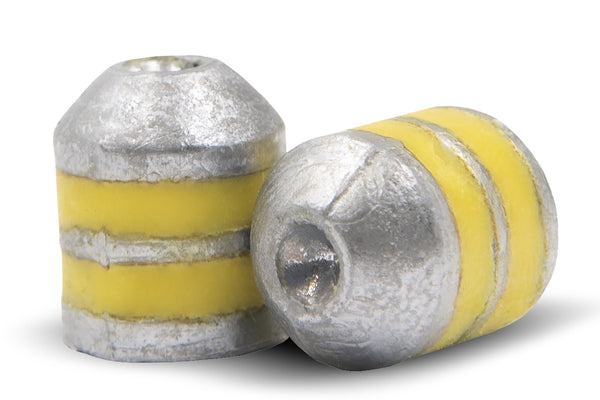
Moving up the technology tree, we next arrive at the Traditional Conical style bullets. These bullets are typically a pure lead or lead alloy composition similar to what you will find in a round ball. These bullets are going to have better ballistic properties than a round ball and are a great option for hunters looking to put a big chunk of lead on target with greater accuracy.
One of the great benefits of this type of projectile is the fact that they will perform well in a variety of twist rates. It is recommended to shoot these bullets with a 1:32 or 1:48, however, they can also be used in slower twist rates as well. This allows traditional muzzleloaders to effectively and accurately put this round down range, delivering excellent terminal performance.
Something unique about these bullets is how they are loaded into the rifle. There are a variety of designs and some are meant to be loaded with a shooting patch, while others load directly on top of the powder. It is important to double check the box of bullets to ensure proper loading. Improper loading will result in poor performance and undoubtably some frustration at the range.
Saboted Bullets

There is a seemingly endless variety of saboted bullets available on the market which makes this style the most difficult to wade through.
While we would love to make it simple and provide a nice neat list of sabot rounds you can use for each muzzleloader, this is, unfortunately, not possible. Due to the variation in saboted rounds and indeed in the muzzleloaders themselves, it is tough to say that one bullet will work as well in one gun as the next. However, that doesn’t mean that there aren't some good principles that can be used to pick a saboted round for your muzzleloader that is more likely to perform well.
In general it would be true to say that the tighter the sabot fits the more likely it is to be accurate in your gun. This turns many people away from saboted rounds as reloading difficulty tends to be high with a proper fitting sabot. This can be mitigated with proper loading equipment such as a sturdy bullet starter and ramrod. Additionally there are several well established brands that have a good track record of performance. Harvester, Barnes and Hornady are some of the better sabot bullet manufacturers on the market and we would recommend checking out their product lines.
Saboted bullets need a fast twist rate for optimal performance. These are modern bullets that have been developed primarily with the high performance inline muzzleloader in mind. It is not recommended to shoot saboted rounds out of a muzzleloader with a twist rate slower than about 1:30. Ideally a 1:28 or faster twist rate should be used for the best performance.
Please note sabots are prohibited in many western states, so if you plan to hunt out west be sure to check the regs before buying bullets.
Belted Bullets

These bullets can be considered a hybrid between a saboted round and full bore muzzleloader bullet. The idea behind belted rounds is to reduce loading difficulty, increase the size of the bullet and cut down on plastic residue left behind by sabots.
When constructed properly, these bullets can be a wonderful option for a wide variety of muzzleloaders. Some popular examples that are well known in the muzzleloading world would be the Powerbelt and the Hornady Bore Driver Series. Belted bullets work along the same guidelines as saboted bullets in regards to twist rate, they perform best at a 1:28 or faster twist rate.
It is important to note that belted bullets do not work well if they fit too loose. If you go to load one of these bullets into your muzzleloader and find that the bullet basically drops down the barrel with no or little effort you will not get good performance out of the round. This is also a possible safety hazard as the bullet could slide back up the barrel if the gun is pointed down. Make sure that the bullet has a snug enough fit to require some force to be applied to the bullet for it to move down the barrel (this should be more than simply the weight of the loading rod).
Full Bore Bullets

The last category we are going to cover are the full bore bullets. There are a few manufactures who make true full bore bullets, the most well known of which is Thor Bullets. These bullets do not have any sort of plastic base or sabot, they are all metal and the bullet directly engages with the bore of the barrel. This is the same as what you see in the centerfire world.
These bullets perform the best of any muzzleloader bullet, however, they are also among the most difficult to load. These bullets are designed for hunters who want the best accuracy possible and don’t mind the greater hassle in loading. Again these bullets are designed for faster twist rates such as 1:28 or faster.
One of the many advantages of shooting full bore bullets besides the accuracy is the on target performance. Most bullets tend to break up on impact and lose a significant amount of mass. This often leads to an absence of pass through and tends to introduce more contamination into the meat of the animal. Many of the full bore bullets are pure copper making them legal to use in almost every state for hunting season. This all copper composition makes for a much stronger bullet that still expands and delivers excellent devastation on target while maintaining nearly all of its mass allowing for deeper penetration. This is ideal for larger animals such as Elk, Moose and Bear.
Summary
There are many bullet options available for muzzleloaders that will get the job done. Whether you are hunting or target shooting you can find a good fit for your application.
It is important to remember that your gun may like a different bullet than the manufacturer recommends or that your buddy with the same gun is using. This is completely normal in the muzzleloading world and simply means you will need to try something different for your gun.
Keys to success picking a bullet:
1. Ensure the bullet you pick is designed to work with the rifle twist rate in your muzzleloader.
2. Remember that the tighter the bullet fits typically the better it will perform, however, all bullets should be able to load without having to hammer on the ramrod.
3. Make sure the bullet you pick is going to be legal in the state you plan to hunt.
4. Be flexible, if the bullet you wanted to shoot just doesn't perform well in your gun, keep an open mind and try something new.
Most importantly have fun, after all that is what this sport is all about. Thanks for reading and we will see you on the next article!
We are here for a higher purpose and believe you are too.
You are loved by God. In fact, He sent His Son Jesus Christ to come to earth live a perfect life and die on a cross for our sins. More than that He raised this same Jesus Christ from the dead for our justification, that all who believe in Him should not perish but have eternal life with God.
Romans 3:23: "for all have sinned and fall short of the glory of God,"
Romans 5:8: "But God demonstrates His own love toward us, in that while we were yet sinners, Christ died for us."
Romans 6:23: "For the wages of sin is death, but the free gift of God is eternal life in Christ Jesus our Lord."
Romans 10:9: "that if you confess with your mouth Jesus as Lord, and believe in your heart that God raised Him from the dead, you will be saved;"
Romans 10:13: "for 'WHOEVER WILL CALL ON THE NAME OF THE LORD WILL BE SAVED'."
The joy of salvation:
Romans 5:1: "Therefore, having been justified by faith, we have peace with God through our Lord Jesus Christ,"
Romans 8:1: "Therefore there is now no condemnation for those who are in Christ Jesus."
Romans 8:38-39: "For I am convinced that neither death, nor life, nor angels, nor principalities, nor things present, nor things to come, nor powers, nor height, nor depth, nor any other created thing, will be able to separate us from the love of God, which is in Christ Jesus our Lord."
Scripture quotations taken from the (NASB®) New American Standard Bible®, Copyright © 1960, 1971, 1977, 1995 by The Lockman Foundation. Used by permission. All rights reserved. lockman.org

